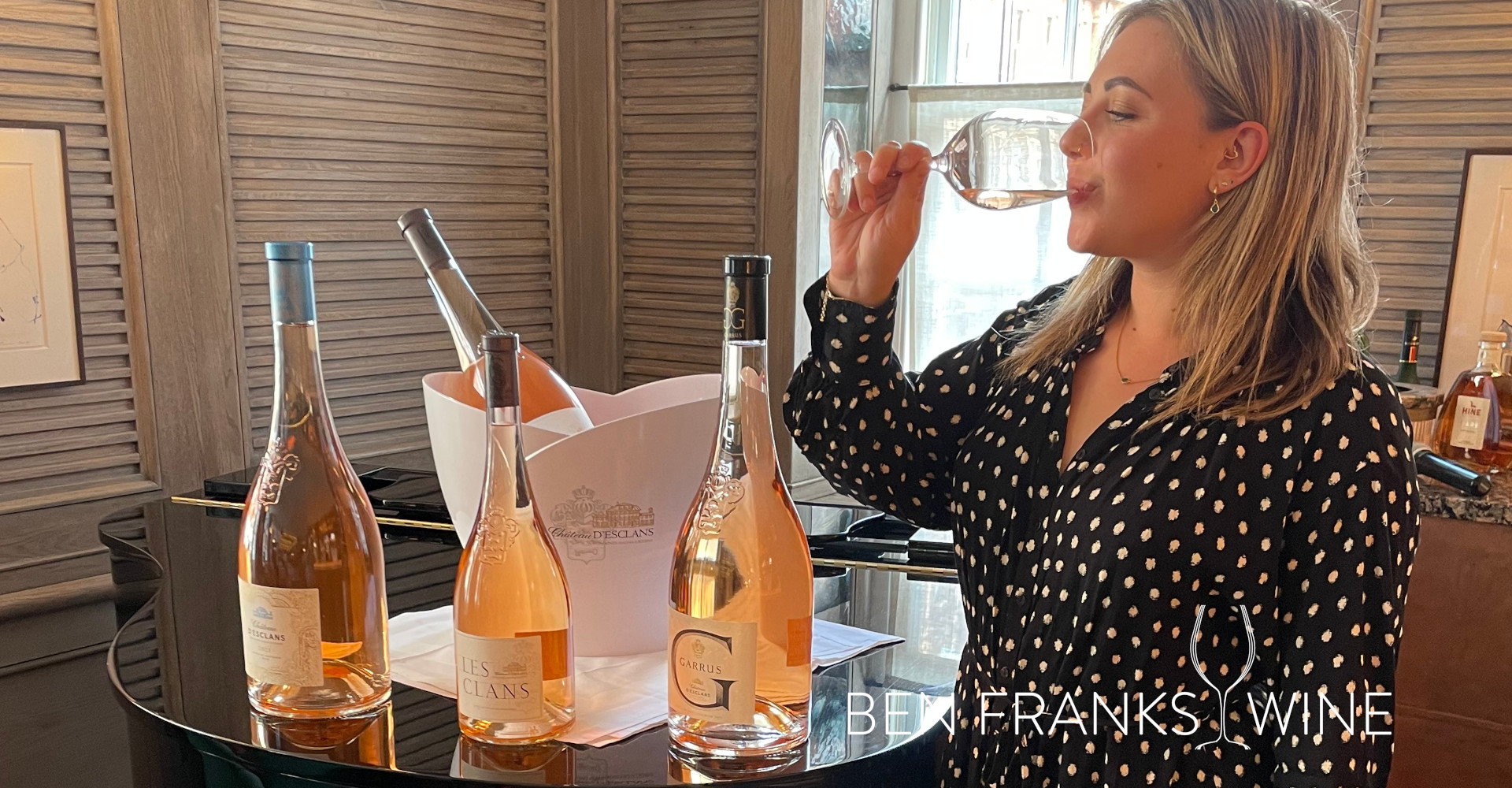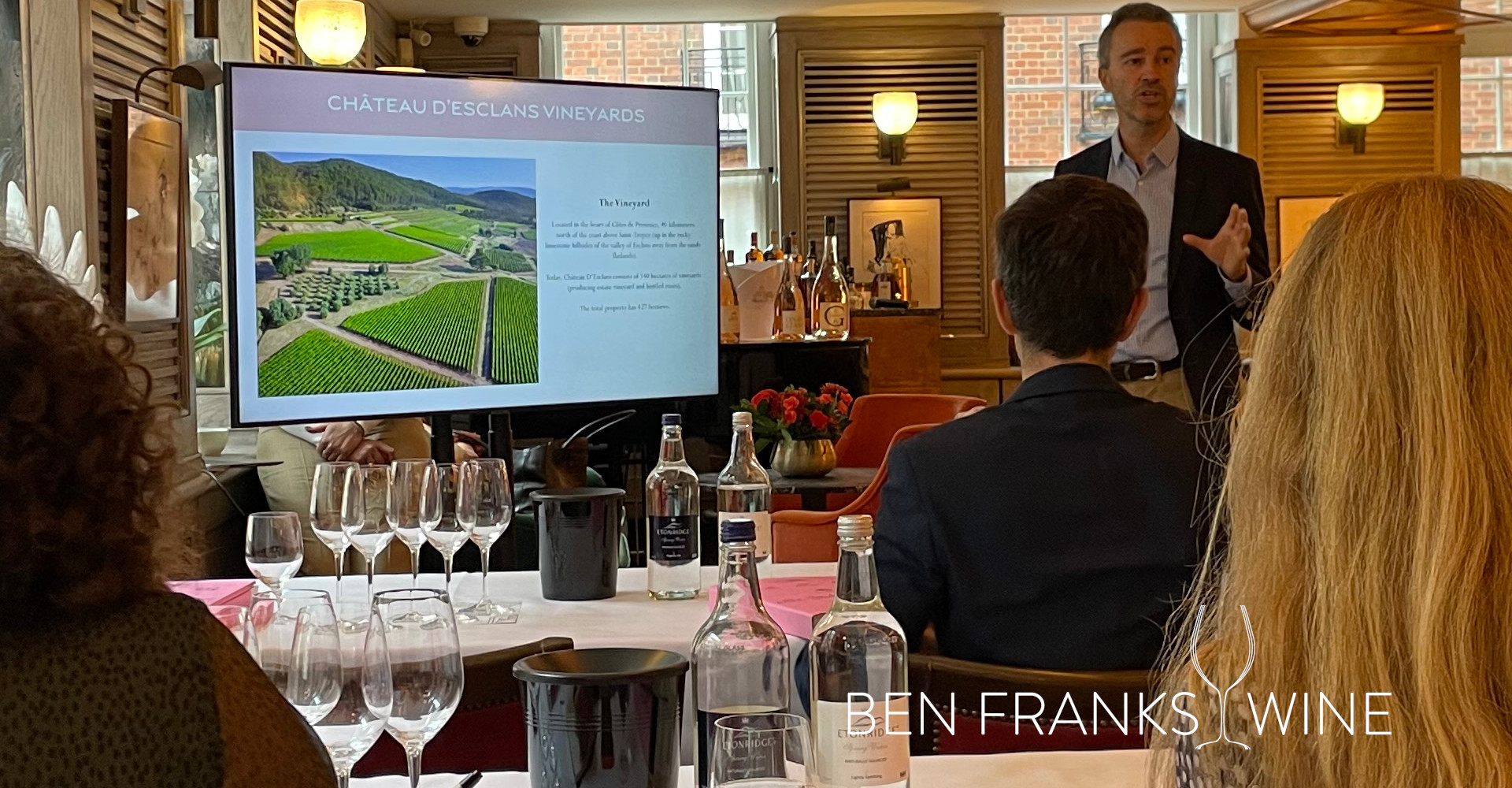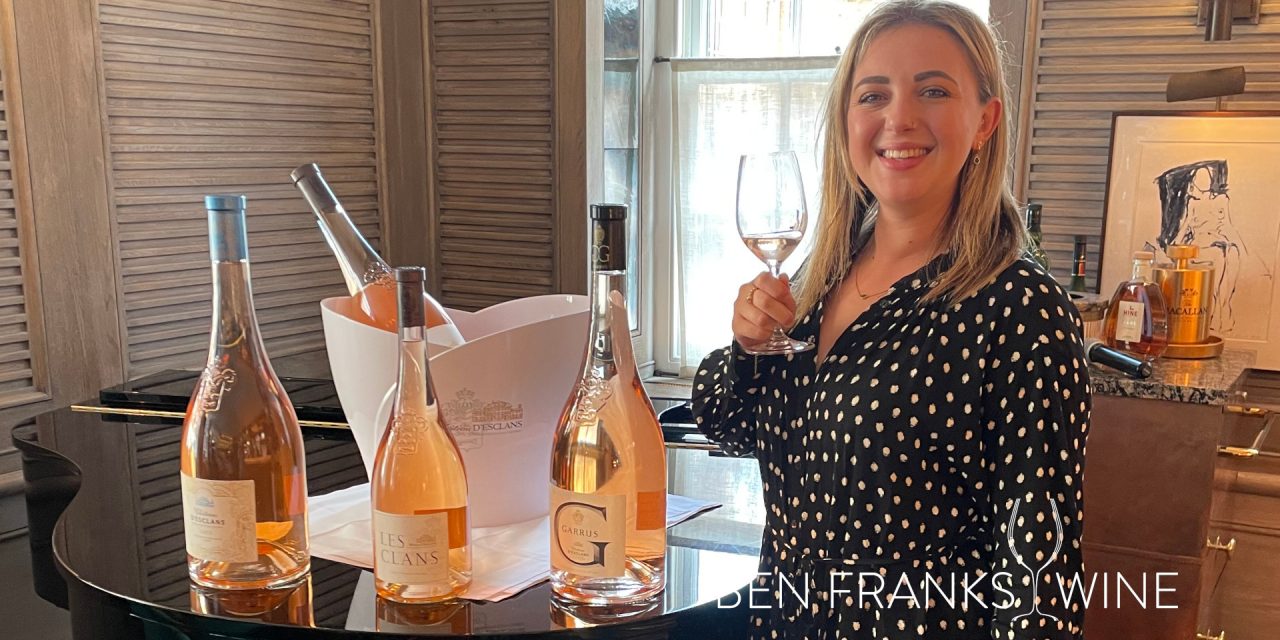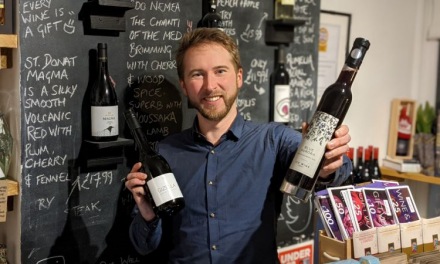This week, Jessica Summer was invited to a vintage flight tasting with the world renowned Chateau D’Esclans. Amongst their flagship brands like the best-selling Whispering Angel rosé was something new: a rosé that’s been barrel fermented with bâtonnage of the lees. Jessica shares her tasting experience and thoughts on doing something new in a region so closely associated with its particular style.
34 Mayfair in London is an appropriately classy venue for a flight of swanky wines, presented at the Château D’Esclans 2021 vintage tasting. We tasted five wines: Whispering Angel, Rock Angel, Château d’Esclans, Les Clans, and Garrus.

Jessica gets stuck into a flight of five rosé wines from Chateau D’Esclans.
The beautiful Château is located in the heart of Côtes de Provence and makes top shelf dry pale rosé. The vineyard has had monumental success since it was taken over in 2006 by Sacha Lichine. Sacha is hugely experienced sawthe potential of rosé wines to be consumed more broadly and as equal partners to red and white wines. We were guided by the estate’s Technical Director, Bertrand Léon. He explained the importance of the vineyard’s location – its aspect, soil and climate – and the use of modern technology to protect the grapes from oxidation.

Bertrand Léon leads a tasting of rosé wines for the 2021 vintage.
The most famous of Château D’Esclans wines is the iconic Whispering Angel (£20). This wine has developed a cult following, is adored by wine lovers across the globe and claims to be the best-selling Rosé in the world. It is everything you would expect from a pale Provence rosé and you can easily purchase it from supermarkets as well as independent wine retailers.
Similarly, Rock Angel (£26) and Château d’Esclans (£38) were more refined versions of what I would expect from exceptional Provence rosé. All three wines are pale in colour, with delicate berry aromas and floral notes, firm and well-balanced acidity, powerful yet elegant and escalating in both richness and price. These are great wines which I would be happy to serve at a tasting event or bring to a dinner party. From a cheese pairing perspective they would pair beautifully with a soft, creamy or fresh, tangy goat’s cheeses; or harder cheeses like ewe’s milk, salty pecorino or a more subtle goat’s gouda.
So, what’s new?
We tasted rosé in a style I’ve never had before.
Both Les Clans and Garrus are both made using barrel fermentation, something different from the stainless steel and temperature control fermentation method used for Chateau D’Esclans’ other wines. I was blown away by their unique flavour profiles and concentration. While I enjoyed the density, complexity and quality of Garrus, at £120 I felt it is exclusive and belongs on a fine dining wine-list. It has been made to be enjoyed with Michelin-starred food rather than being showcased at a cheese and wine tasting event or paired with a cheeseboard (though this all depends on your budget, of course, because it would pair beautifully with cheese!).

Therefore I will steer my analysis towards my favourite of the two: Les Clans (£64). This wine is made with grapes from 50-55 year old vines and 100% barrel-fermented in French oak barrels with bâtonnage of the yeast lees. This means the wine has the usual berry fruit flavours of a Provence rosé but also gives the wine a toasty hazelnut and vanilla quality with liquorice notes!
This is so unusual for a Provence rosé and I am all here for the innovation! If I had been blind tasting the wines I would have guessed it was a glass of white Burgundy made with chardonnay grapes. This makes me very excited;not only does this mean that this style of rosé can be imbibed young or aged, but it opens up so many new possibilities for cheese pairings. I would pair richer, fattier cow’s milk cheeses with this style of rosé, which would be too overpowering for the more delicate classic Provence wine. I would recommend alpine style cheeses like comté or gruyere as well as soumauntrain (a mild version of an époisses), camembert or brie de meaux. The high acidity in the wine would cut through the fattiness of the cheese whilst the warm rich oaky flavours would compliment the creamy milky flavours.

Jessica Summer with her new favourite: the innovative Les Clans rosé.
I was thrilled to discover this new style of rosé, but other wine industry attendees were not so taken with the idea. I had an interesting conversation with a fellow wine writer where she explainedbarrel-aged rosé is too different from the expected flavour profile of a traditional Provence. Though this wine has been designed to pair with food she wasn’t sure about its place in the market. After all, specific regions produce a specific style of wine like New Zealand’s sauvignon blanc or Chilean merlot.
Just because a wine is breaking the mould of what is expected, does that mean there isn’t a place for it in the mass market? I think that with the rise of natural wines and orange wines lots of consumers like trying new things. We should encourage winemakers to experiment and develop flavour possibilities.Not only does that make it a more interesting experience for the consumer, it also creates new cheese and wine pairings to be discovered and enjoyed-at least it does for this Provençal bumpkin.
~~
What do you think? Is barrel fermented rosé an exciting opportunity, or should Provence stick to what it knows best? Have your say!
Photos by Jessica Summer.






